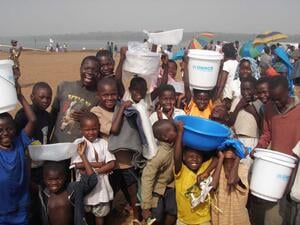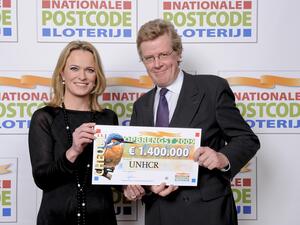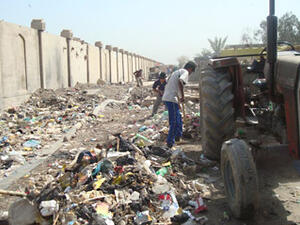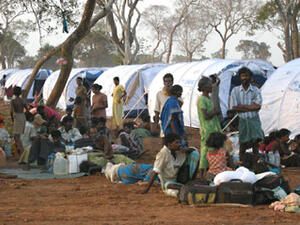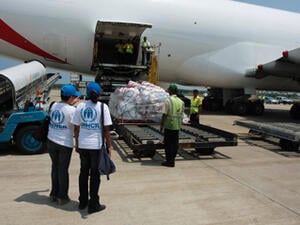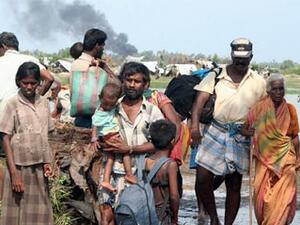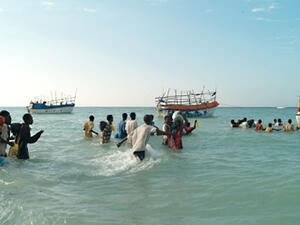Reaching out to Colombians in need of assistance in northern Ecuador
Reaching out to Colombians in need of assistance in northern Ecuador
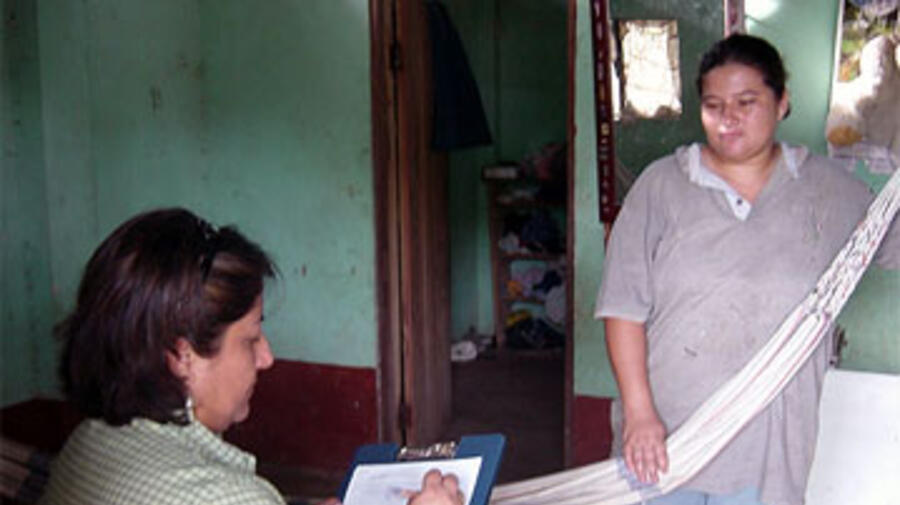
Social worker Isabel Avalos (sitting) checks on the needs of a Colombian refugee in northern Ecuador. Tracking down the scared refugees is one of the biggest challenges Avalos faces.
Note: this story was edited on June 26 to clarify the number of Colombian refugees and asylum seekers in Ecuador.
LAGO AGRIO, Ecuador, June 23 (UNHCR) - Isabel Avalos thought the directions were a bit vague: The green house next to the butcher's shop in a small neighbourhood of Lago Agrio. When she finally tracked down the building, it was located next to a butcher's shop and the people she was looking for - a Colombian refugee and her six little girls - had moved out the previous night.
"This happens all the time," said Avalos, a social worker with the Fundación Fabian Ponce, one of UNHCR's implementing partners in Ecuador. "A family might come to the office one day and tell me that they have fled with nothing at all - often they have four or five children. We give them emergency assistance for a few days, I take their address and tell them I will visit that same week, but by the time I get there they have already moved."
Located only 14 kilometres from the border, Lago Agrio is the first port of call for many Colombians crossing into northern Ecuador to escape violence and persecution in their country. Those who come to UNHCR to register as asylum seekers are offered protection and, if needed, assistance. It is Avalos's job to check what their needs are.
But frightened refugees will often keep running to get as far away from their persecutors as possible. Fourteen kilometres and a river may seem like slim protection to people terrorized for years by irregular armed groups across the border. Many families move again and again, and this high level of mobility is a big challenge for Avalos. On a typical day, she starts with a list of 15 families to visit, but only tracks down about half of them.
Her second visit of the day was also unsuccessful - the family she was looking for had left and nobody knew where they had gone. Avalos was luckier on her next call - to an indigenous family living in a wooden shack in the middle of a tropical forest. The place was not easy to locate, but Avalos found the mother and four children at home.
She asked a few questions before taking a tour of the shelter. A quick look is all she needs. There were no beds or blankets in the two small rooms in which eight people sleep, no cooker or fridge in the house. One of the little girls was very sick but had not seen a doctor, while all the children showed signs of malnutrition. The family had been in Ecuador for several months, but had only recently made contact with UNHCR.
"After my visits, I write a short report on what I think the needs of each family are and then we discuss it at the assistance committee," said Avalos, referring to a body that includes UNHCR, the church and local partners. "We have very limited resources and we have to take some very hard decisions. In a situation like this, where the family is so clearly destitute, we will do all we can to assist."
In this case, the initial assistance will come rapidly. The family is one of 97 in the area that will be given materials - wood, zinc and nails - to build a simple house. "It is only a pilot project for the time being," said Avalos, "but if it works out we hope it will be expanded."
An equatorial storm broke out as she made her way back to the car. She waited for the storm to blow over and then set off to visit a mother of four who is HIV positive. She was not at home, but Avalos managed to locate the eldest daughter - a girl of 15 - working in a nearby bar.
"Of course it's worrying," Avalos said. "When families dislocate, young girls are especially vulnerable. One of our biggest concerns in this region is the level of sexual exploitation that Colombian girls and women suffer from, both inside and outside the family. The problem is endemic. We have several projects with other partners, including an HIV/AIDS project which brings together seven UN agencies and the local authorities."
Avalos said there were not enough hours in the day - let alone financial resources - to help so many people. But her caseload is only the tip of the iceberg. Many Colombians fleeing to Ecuador never contact UNHCR - either they do not know that they have a right to international protection or they are too scared and prefer to remain in hiding.
Some 200 people a month are registered by UNHCR in Lago Agrio, but the office estimates that the true numbers of Colombians in need of international protection in the border area could be much higher. The same is true at the national level. Ecuador is home to almost 14,000 Colombian refugees and asylum seekers, yet the government and the refugee agency think there could be up to 250,000 Colombians of concern in the country.
On a recent trip to Ecuador, UNHCR Assistant High Commissioner for Operations Judy Cheng-Hopkins described the situation in the region as "an invisible humanitarian tragedy" and called on the international community to pay more attention to the victims of the Colombian conflict on both sides of the border.
By Marie-Hélène Verney in Lago Agrio, Ecuador

